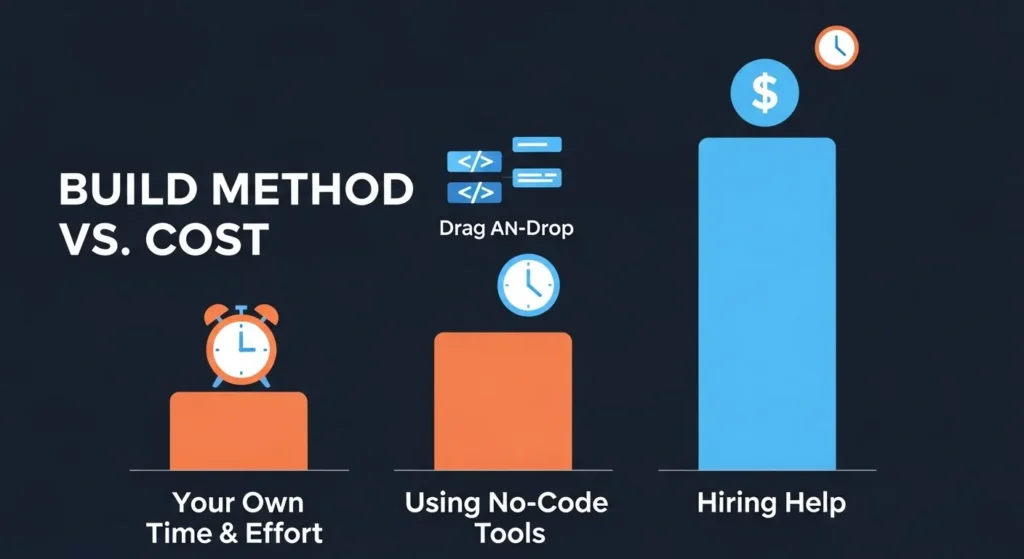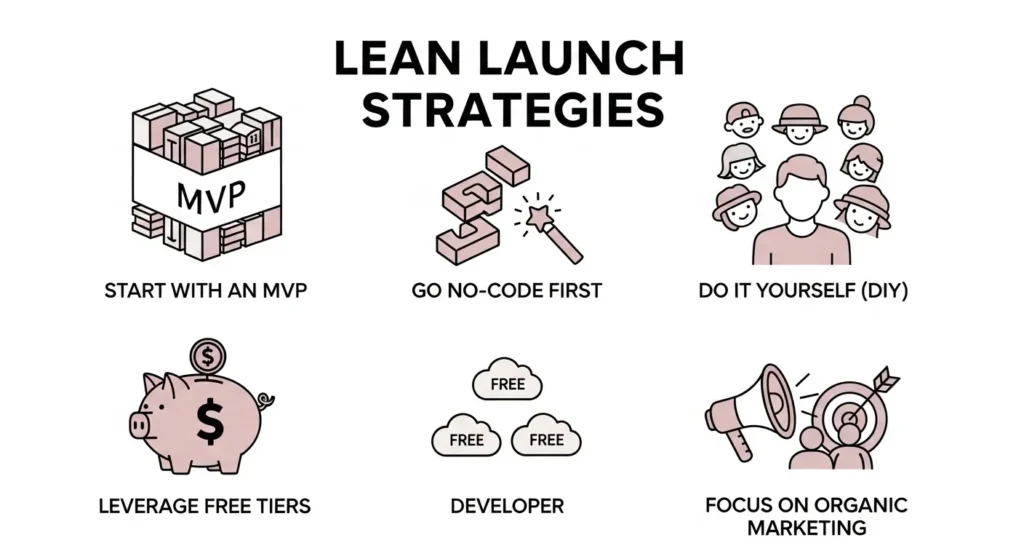One of the most common questions for anyone dreaming of starting a software business is simple: how much to build micro SaaS? Unlike big companies that need millions to start, micro SaaS offers a much more affordable path. However, it’s not entirely free. Understanding the different financial pieces involved will help you create a realistic micro SaaS launch budget and avoid surprises.
For a holistic view of micro SaaS, from finding ideas to growing and even selling your business, refer to our ultimate guide: The Ultimate Guide to Micro SaaS: From Idea to Exit.
The “It Depends” Factor: Why Costs Vary So Much
There isn’t a single, magic number for the cost to build micro SaaS. The total amount you’ll spend depends a lot on several things:
- Who is building it? Are you doing it yourself, or are you hiring someone?
- What tools are you using? Are you using simple “no-code” platforms, or are you writing custom computer code?
- How complex is your idea? A simple tool with one main feature will cost less than something with many moving parts.
- What are your ongoing costs? This includes things like hosting your software online and paying for other services it needs.
Let’s break down the different expenses you might run into when planning your micro SaaS development expenses.
Key Expenses When Building and Launching
Building and launching a micro SaaS involves different kinds of money going out. Here are the main areas where you’ll likely spend:
Your Micro SaaS Budget
Complete Cost Breakdown for Building & Launching
💡 Pro Tip
Start lean with no-code tools and MVP approach. You can always scale up your tech stack as you grow. Focus 80% of your initial budget on development and validation, then reinvest profits into marketing.
1. Development and Building Costs
This is often the biggest part of your micro SaaS budget. It’s about turning your idea into a working product.
Your Own Time and Effort: If you build the software yourself, your main cost isn’t cash, but your time. While it saves money directly, remember your time has value. Learning new skills or actually building the product takes many hours. This is the most budget-friendly way to start if you have the skills.
Using No-Code Tools: These tools let you build software without writing traditional computer code. They often come with monthly or yearly subscription fees. Depending on the tool and the features you need, these can range from a small monthly fee (like $20-$100) to more significant amounts (a few hundred dollars per month) if your app uses a lot of their features or has many users. Even with these fees, no-code is usually much cheaper than hiring someone.
Hiring Help (Freelancers or Agencies): This is the most expensive option. If you need someone else to build your software, you’ll pay by the hour or by the project. A good freelance developer can charge anywhere from $50 to $150+ per hour, and a small project could cost thousands, even tens of thousands of dollars, depending on how complex it is. This is typically not the starting point for a truly “micro” SaaS unless you have significant upfront capital.

2. Ongoing Operation Costs (After Launch)
Once your micro SaaS is built, it needs to live somewhere online and might use other services. These are your regular, recurring micro saas development expenses.
Web Hosting or Cloud Services: Your software needs a place to “live” online so users can access it. Services like Amazon Web Services (AWS), Vercel, or Render provide this. For a small micro SaaS, these costs might be very low to start (even free tiers exist!), but they will grow as more people use your software. Expect anywhere from $5 to $50 per month initially, scaling up as you grow.
Domain Name and Security (SSL): You’ll need a website address (like yourproduct.com), which usually costs around $10-15 per year. A security certificate (SSL) makes your site safe and is often included free with hosting or through services like Let’s Encrypt.
Third-Party Tools and Services: Your micro SaaS might need to connect with other services. For example, if you collect payments, you’ll use a payment gateway like Stripe, which takes a small fee from each transaction. You might also pay for email services (to send welcome emails or newsletters) or tools that help your app work with other popular services. These costs vary widely based on usage.
Other Software Subscriptions: You might use project management tools, design software, or other subscriptions to run your business effectively. These add to your monthly overhead.
3. Initial Launch and Marketing Costs
Getting your first customers also has a price, though it doesn’t always mean spending a lot of money on ads.
Marketing Activities: While many micro SaaS founders start with free marketing like talking to people in online communities or writing helpful articles (content marketing), you might eventually invest in paid advertising. This could be anything from $50 to hundreds or thousands of dollars per month if you run ads.
Legal Help: It’s a good idea to have a privacy policy and terms of service for your software. You can find free templates, or you might pay a lawyer a few hundred dollars to draft them, depending on your needs.
Estimating Your Micro SaaS Budget: Some Scenarios
So, what could your micro saas budget look like?
Scenario 1: The Bootstrapped Solo Founder (No-Code)
Initial cash outlay: $0 (if using free trials/tiers initially) to $50-$200 per month for no-code platform subscriptions and basic hosting. Your “cost” here is mostly your time and effort.
Scenario 2: The Bootstrapped Solo Founder (With Basic Coding Skills)
Initial cash outlay: $5-$50 per month for basic hosting and perhaps some development tools. Again, your time is the main investment.
Scenario 3: Outsourcing Development (Small MVP)
Initial cash outlay: This can range from $2,000 for a very simple MVP with a freelancer, up to $10,000-$20,000+ for something more complex or built by a small agency. Monthly ongoing costs would still apply (hosting, tools).
Remember, these are rough estimates. The actual micro saas development expenses can vary greatly.
How to Keep Your Micro SaaS Costs Low?
The beauty of micro SaaS is the ability to start lean. Here are smart ways to minimize your cost to build micro saas:

- Start with an MVP: Only build the absolute core features needed to solve the main problem. Don’t add extras until you know users want them.
- Go No-Code First: If you’re not a developer, use powerful no-code platforms to get your product out quickly and affordably.
- Do It Yourself (DIY): Learn basic design, marketing, and customer support yourself to save on hiring.
- Leverage Free Tiers: Many services offer free plans or trials that are perfect for getting started without upfront costs.
- Focus on Organic Marketing: Build an audience through content, social media, and community engagement before spending on ads.
Final Thoughts
Developing and launching a micro SaaS doesn’t have to break the bank. By focusing on a minimalist approach, choosing your tools wisely, and being strategic with your spending, you can build a profitable software business with a surprisingly modest investment. Your biggest initial investment might be your own time and dedication, which is truly priceless.

